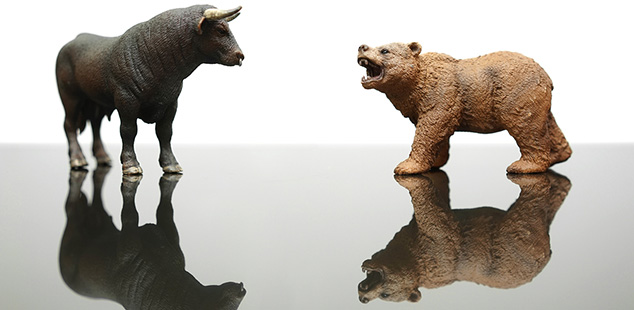
Anyone who follows the financial reports repeatedly hears news about various markets that are up or down. At any given time, some asset classes will be in turmoil and going through a downturn, while others seem to be on the rise. Occasionally, such as the meltdown of 2007-2009 1, it will seem like all the markets all over the world are diving down.
The press and many politicians were nearly frantic in reporting that most Americans had lost 50 percent or more of the value of their retirement funds during that meltdown. The panic brought about calls for new government regulations and frightened many small investors out of the market. Unfortunately, most of those missed out on the dramatic recovery that has those same accounts ahead of where they were during the decline. Likewise, you don’t hear much talk today about this miracle of the markets.
What Goes Down Will Come Up
Just recently, the “Black Monday” crisis that began with the Chinese stock market crash seemed to mirror some aspects of the 2008 meltdown. The reality is that these cycles are a part of all markets, and have been throughout history. In fact, many economists now argue that such cycles are a necessary and natural function of keeping markets realistic and functioning. In other words, the excesses of supply, speculation, demand and other factors are adjusted and controlled during these cycles that can seem to be (and are to some) so devastating.
To avoid that devastation, one must understand the difference in being a trader and a long-term investor. Just as importantly, one must take steps to ensure their assets are properly diversified in such a way as to minimize the impact of these inevitable factors. One strategy is to keep a portion of a retirement portfolio in a precious metals IRA.
The simple facts are that over the past 90 years, financial markets have gone up 73.9 percent of the time, and the gains in positive years generate approximately double the losses incurred in down markets. Moreover, there are a wide range of unpredictable and uncontrollable factors that can cause short to intermediate-term market swings. These include such events as:
- A natural disaster
- Oil shortages or oversupply, as well as other commodities
- A military crisis
- A political crisis
- A financial scare or crisis
Developing the Right Attitude and Strategy
If these market cycles are so inevitable, it is also important to understand the differences in what they mean to short-term traders and long-term investors. Short-term traders must understand that market cycles are essentially random, while long-term investors should grasp that they are, to a large degree, predictable.
What these statements mean is that investing in gold requires a strategy that minimizes the impact of being “surprised” by a market swing up or down. Likewise, the long-term investor can rest easy during those market swings and see them not as a threat but as an opportunity to buy low or lock in profits while waiting for an inevitable downturn.
This means there is a proper role to use market swings to one’s advantage as a trader or investor. However, doing so takes careful planning, good advisors, and a rational, non-emotional approach to the markets and their predictable vagaries.
Additional Sources:
1 – http://money.usnews.com/money/retirement/articles/2009/02/12/how-did-your-401k-really-stack-up-in-2008

